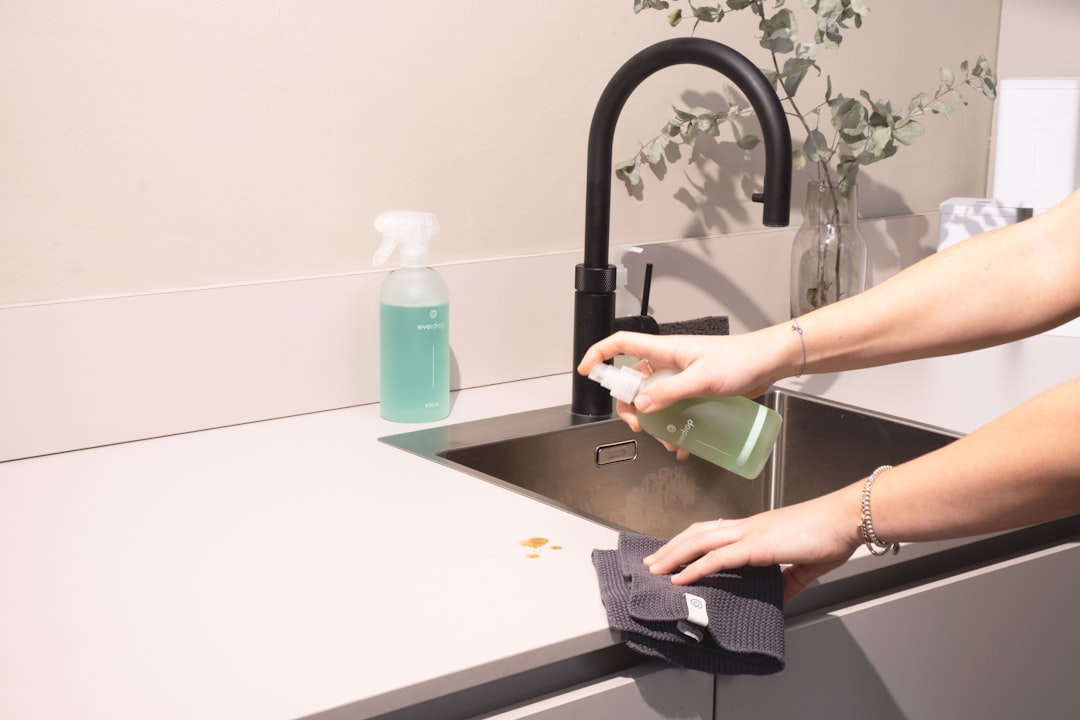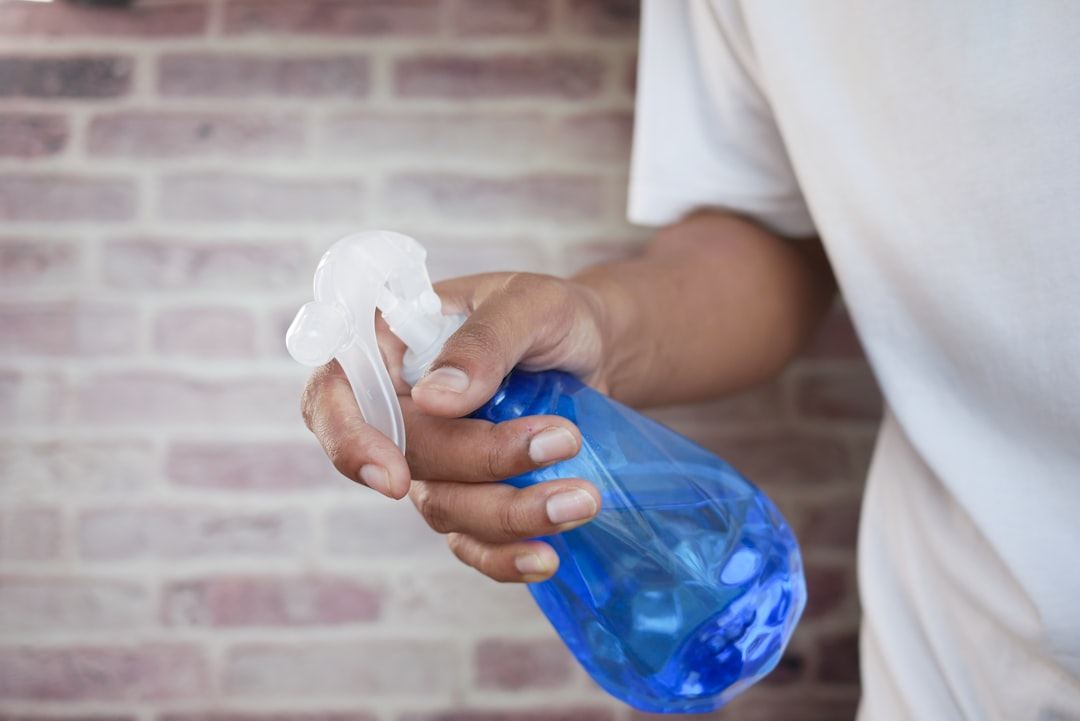Peanut Butter and Salmonella
The Jif Salmonella outbreak is causing recalls in other foods. Please check this FDA website to see if you have any of the recalled products. This is one way you can make sure your family are safe!
Cleaning and Sanitizing at Home

One of the main tasks I find with my food safety consultancy is teaching new food manufacturers about sanitation. The difference between what happens in a food facility compared to our practices at home are large. I wouldn’t want anyone to be using commercial sanitizer to clean their kitchens.
I am not obsessed about cleaning at home. I do what I have to do for me to be comfortable and I know it isn’t as much as other people do and it certainly isn’t close to a commercial cleaning. My kitchen is clean as I do that as I go and I occasionally spray or wipe down the counters with bleach. This means that this article was a stretch for me to write and I have changed my practices a little writing it.
In the last few Food Crumb articles, I discussed food safety at home and the four practices we must follow to reduce the risk of food poisoning.
In this article, I will discuss cleaning and sanitation and what is appropriate for a home kitchen.
What is cleaning and sanitation?
Cleaning
To have something clean implies it is free from dirt or pollution, and when we are cleaning, we remove dirt, impurities, or extraneous matter.

In a food environment, cleaning is physically removing soil, which is more than garden dirt. Soil is matter out of place; it can be alive, dead, biological based, or nonbiological, and soil may or may not be organic material. People may introduce soil or it may come from the air or mists. A soil may have been an essential part of the process that, if it remains on the surface, becomes a liability.
Thus, cleaning is the removal of visible dirt - so crumbs on the counter or food left on a plate. The best way to clean is to use hot soapy water and a clean dishcloth, or possibly for dishes and utensils we may clean them in a dishwasher.
We use dishcloths and tea-towels for too long and, as these damp cloths are great places for bacteria to grow, they spread bacteria and viruses. Make sure that you use a clean cloth that is only used for this purpose. If you are reusing dishcloths, use a hot cycle when washing them. If this isn’t possible, use a disposable paper towel for cleaning surfaces.
If counters and utensils are not clean, sanitation won’t work because the purpose of sanitation is to kill bacteria and remove viruses.
Sanitation
Sanitation is according to Merriam Webster is “the act or process of making sanitary or the promotion of hygiene and prevention of disease by maintenance of sanitary conditions (as by removal of sewage and trash)” where the most relevant definitions of sanitary is “characterized by or readily kept in cleanliness”.

In a food environment, like a commercial kitchen, sanitation is the next level of protection after cleaning. Sanitation usually refers to using chemicals like bleach to kill and inactivate bacteria and viruses. Most home sanitation agents are based on chlorine; unscented clorox or generic equivalents are effective sanitizers. Sanitizer wipes are not as effective as your own solution of sanitizer solution (¼ teaspoon bleach +1 quart cool water). Food safety regulators do not recommend using a bleach with fragrances as sanitizers.
When you use bleach as a sanitizer, for personal safety, wear rubber gloves and eye protection. Bleach is very corrosive and can burn especially sensitive eyes.
Do not add bleach to your soapy dish water as soap interferes with the action of the bleach. To sanitize dishes and utensils with bleach, wash them is hot soap water, rinse, and then dunk them in sanitizer solution for over 1 min and then air dry.
You can also use heat to sanitize. This is how many sanitation cycles in dishwashers work. If you don’t use a dishwasher and don’t want to sanitize with bleach, make sure that your wash and rinse water is 170 F (77 C) or higher and let your dishes and utensils air dry or dry with a clean tea towel.
I strongly recommend regularly cleaning your kitchen counters, sink, stove, doors, utensils every day. Sanitation is important after preparing raw chicken and meat and when and after anyone in your home is unwell.
Germaphobia
It is easy to become germophobic when reading advice about cleaning and sanitizing! Learning that bacteria and viruses can survive cleaning is very uncomfortable.
Oh, no! My kitchen has germs!
Remember that the best way to avoid spreading bacteria and viruses is to wash your hands regularly and thoroughly and do NOT wash poultry or meat.
It is important to clean before and after preparing food. However, don’t obsess about sanitation unless you have someone at home who might be more at risk for food poisoning, such as a young child, an elderly adult, or someone who is immunocompromised. I recommend sanitation after preparing high risk foods such as raw chicken or raw meat.
At home, be cautious but relaxed. Don’t let the idea of bacteria and viruses put you off preparing delicious healthy meals for your family. And don’t let this stop you from teaching your children and family members how to cook.
Commercial Food Preparation
This does not apply to anyone who prepares food for sale. Commercial preparation of food requires a written cleaning and sanitation process that is recorded and monitored. Reach out if you have questions about preparing a written cleaning and sanitation procedure for your commercial kitchen.
Bibliography
https://stopfoodborneillness.org/fft-clean-sanitize-disinfect/
https://www.foodnetwork.com/healthyeats/healthy-tips/clean-disinfect-sanitize-kitchen
https://extension.psu.edu/cleaning-sanitizing-and-disinfecting-in-the-home
https://www.healthline.com/health-news/cleaning-with-bleach-can-release-harmful-airborne-particles
https://www.cleaningservicegotham.com/the-dangers-of-bleach/
https://www.food-safety.com/articles/6309-the-importance-of-cleaning-for-food-safety
https://www.foodsafety.com.au/blog/food-safety-cleaning-and-santising
Notes
From the FDA Food Code
Hot water for hand washing in toilet facilities and hand washing sinks in the plant should be at least 100 °F (38 °C).
To use hot water as a sanitizing step, the water should be at least 171 °F (77 °C).
I write about the intersection of food science and food systems with an emphasis on food safety, food justice and resilience.
I run a food safety consultancy, Food Safety Mid Atlantic, supporting small and mid-sized food businesses with their food safety plans and programs. If you are interested in learning more about my consulting services, please schedule a free call.
More information here: Food Crumbs: About
Please subscribe to Food Crumbs today, if you haven’t already.




